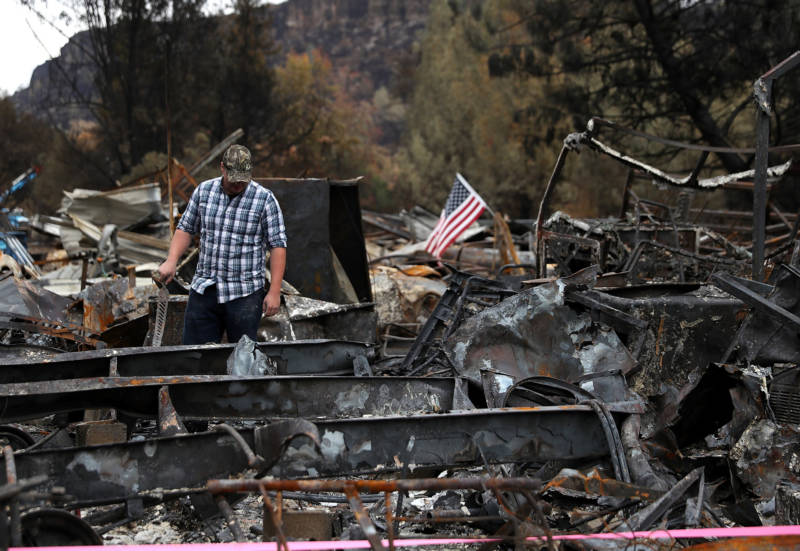The plan is the culmination of six months of work by the administration, which confronted an escalating wildfire and utility crisis even before Newsom took office in January -- a crisis that led to the state’s largest utility, PG&E, filing for bankruptcy protection just weeks later.
Newsom’s proposal takes special aim at PG&E, which is still mired in those bankruptcy proceedings and has yet to settle with thousands of wildfire victims who sued the company after the catastrophic fires of 2017 and 2018.
The governor’s proposal would tie PG&E’s ability to participate in the new insurance scheme to the company fairly compensating those wildfire plaintiffs and exiting bankruptcy proceedings by June 30, 2020.
Newsom unveiled the proposal, along with a “report card” laying out what his administration has done to “address the destabilizing effects of catastrophic wildfires on our California electricity customers,” on Friday morning.
He pledged to work with the Legislature to incorporate the proposal into a series of bills -- measures he hopes will be passed by July 12, when lawmakers start their summer recess and as fire season gets into full swing.
“We’re on our way to building a safer, more resilient energy future -- one that treats wildfire victims fairly and protects California consumers,” Newsom wrote in an introduction to the wildfire action report card. “The framework we will pursue maximizes shareholder contributions to a solution, minimizes ratepayer exposure to sticker shock rate increases, and mandates a culture of safety in our utilities to prevent wildfires.”
The governor’s office said the insurance fund could be as large as $21 billion if utilities choose to participate and meet the requirements Newsom plans to write into legislation.
Under the plan, only the state’s three investor-owned utilities -- PG&E, Southern California Edison and San Diego Gas & Electric -- would participate in the fund.
The proposal calls for half of the fund to come from utility investors. Half would be funded by ratepayers through bonds.
Utilities could tap the fund if a fire caused by their equipment results in more than $1 billion in property damage. However, they would have to repay the fund if the California Public Utilities Commission finds they did not act “prudently” in maintaining and operating their equipment.

